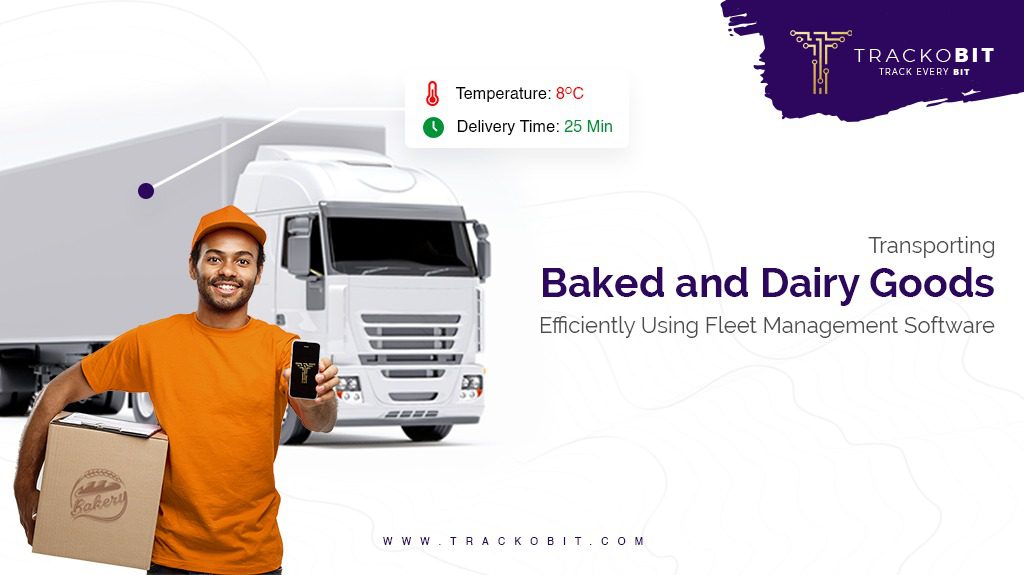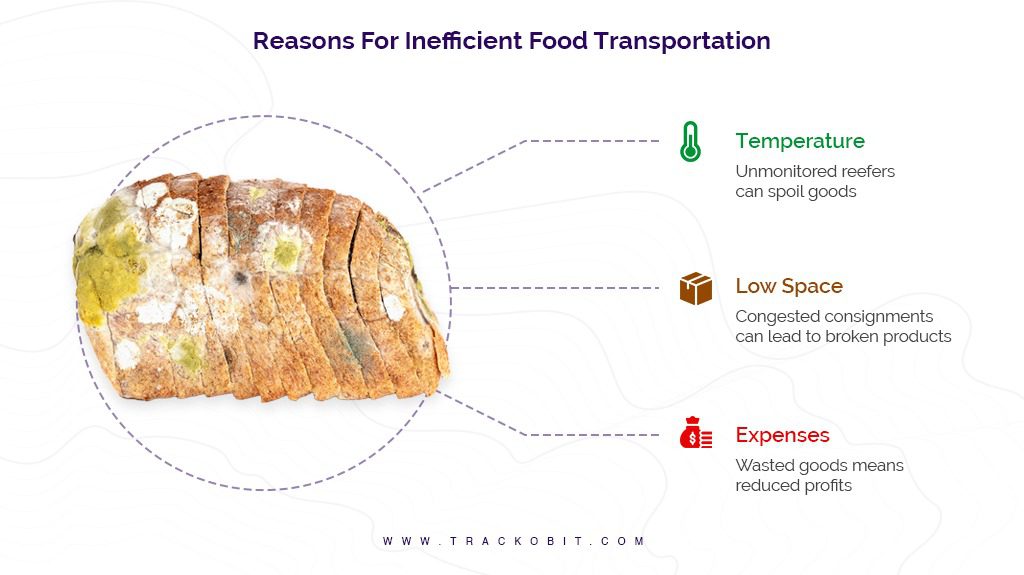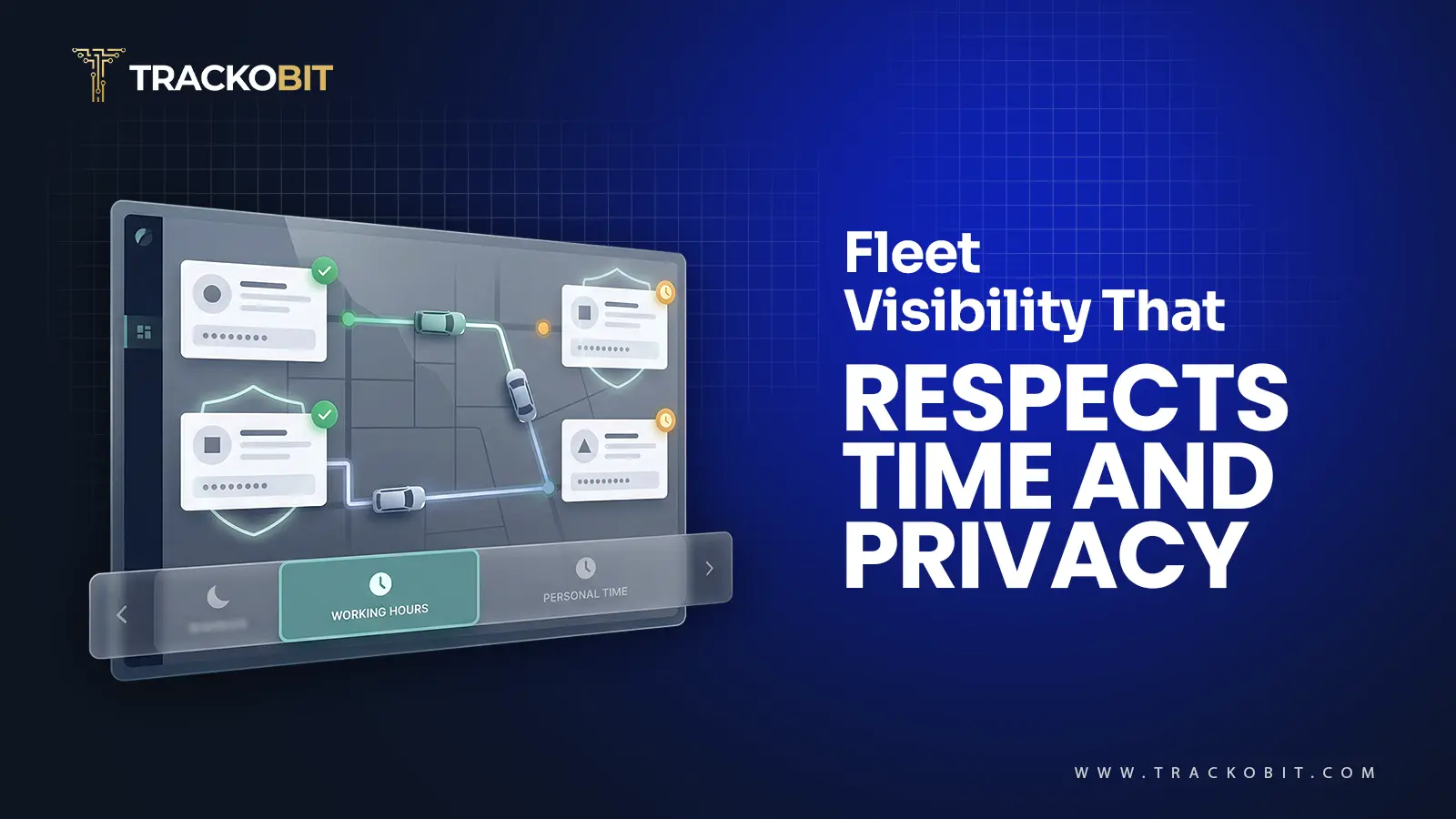-
TrackoBit
Manage commercial vehicles with the new-age Fleet Management Software
TrackoBit -
TrackoField
Streamline your scattered workforce with Field Force Management Software
TrackoField -
Features Resources
-
Blog
Carefully curated articles to update you on industrial trends. -
White Paper
Insightful papers and analysis on essential subject matters. -
Glossary
Explore an alphabetical list of relevant industry terms. -
What’s New
Get TrackoBit & TrackoField monthly updates here. -
Case Study
Explore the cases we solved with our diverse solutions. -
Comparisons
Compare platforms, features, and pricing to find your best fit.
-
About Us
Get to know TrackoBit: our team, ethos, values, and vision. -
Careers
Join the most dynamic cult of coders, creatives and changemakers. -
Tech Support
Learn about our technical support team and services in detail. -
Events
Check out the exhibitions where we left our marks and conquered. -
Contact Us
Connect with us and let us know how we can be of service.
How To Simplify Dairy Transportation Using Fleet Management Software
- Author:Drishti Dua
- Read Time:7 min
- Published:
- Last Update: December 17, 2025
Table of Contents
Toggle
We have all consumed some form of perishable goods in our lifetime. Exhibiting a CAGR of 5.4%, the FMCG industry is expected to exceed USD 15 Billion by 2025 globally.
Table of Contents
Toggle
With such a high number at stake, it is understandable why businesses are slowly turning to different optimisation methods for goods transportation.
Investing in fleet management software is not just a possibility but a need of the hour. Before we look into perishable food transportation’s challenges, we need to understand fleet management systems and their relation to the FMCG industry.
Fleet Management For Perishable Goods
Perishable goods have a very small shelf life. Past that point, they are unfit for human consumption. For baked products like store-bought bread, this time span can be as low as 4-5 days at room temperature. This commodity’s wastage can not only garner heavy losses for businesses but can also be harmful to the environment.
The perishable goods’ transportation process is very delicate. The inventory shrink rate of such goods can be as high as 5% to 10% during transportation. When we take into consideration the massive scale of baked and dairy food businesses, this loss can equal millions. This wastage can be caused by unfavourable conditions, road accidents and negligence.
Manual optimisation is impossible for transport fleets. Most of these food products travel long distances from factories to distributors and eventually to retailers. This is why a fleet management system not only allows managers to control their fleet’s activities remotely but also track their vehicles in real time.
So what are the issues that businesses have to resolve for seamless transportation practice? Let us find out in this next section.
How Can Perishable Goods Transportation Pose a Challenge?
Have you ever wondered what goes on behind food items reaching your kitchen for consumption? Well, there are several issues that are associated with the transportation of consignments. These include safety concerns, lack of monitoring, and fuel costs.
But this list of concerns grows significantly when these goods are not only fragile but also require quicker transportation than others. Some common problems faced by businesses and fleets while this procedure are:
Temperature Control
Goods like bread, baked goods and dairy products have to be stored at very specific temperatures for them to stay edible for longer. These products can go bad before they even reach consumers if the correct temperature is not maintained. In fact, cold chain mismanagement contributes to almost 50% of total food spoilage during transportation.
Space Requirement
For baked goods like bread, cookies and cakes, ample space is required so that products are not stuffed together. These food items are usually delicate enough to crumble under pressure.
The highest contributor to food losses in the transportation process is mechanical malfunctions like bumping and breaking of products. This is why fleets need to have precise calculations on the ideal weight each vehicle should carry, thus ensuring minimal physical damage to these consumer goods.

High Expenses
Baked and dairy products’ transportation can be very expensive. Not only do they require equipment that can maintain low vehicle temperature, but the damages to products also reduce profitability. Factors like bad road conditions and vehicle accidents can also damage consignments.
There are instances when drivers deliver goods to various shops in a single trip. During this delivery process, bread and dairy products are usually stored in crates. On vehicles’ return trips, drivers are responsible for collecting these crates back from shops.
Due to human error, the number of crates returned might reduce. Drivers can forget any halt or shopkeepers might return fewer crates than what they had received. This adds to the additional costs for fleet owners as lost crates need to be bought again.
Can Fleet Management Software Help?
In order to ensure efficiency, businesses need to devise methods to control their fleet. This is where a fleet management system comes in handy. Managers can use it to their fleet’s benefit in the following ways:
Route Planning
Choosing the right paths for fleet travel is very essential in its optimisation. Dairy and baked goods transportation happens after much consideration keeping in mind clients and their priorities. This becomes possible through a route planning solution. Features included in this solution are:
- Numbered Stops: Managers using route planning solutions have an option to add halts and their sequences to the system. Thus, the system keeps track of all these halts. When drivers have to make a reverse trip while collecting the crates they had previously distributed, they have data to tally their halts to eliminate chances of error. Halts can be numbered according to the clients and how important they are for a fleet business. If a high priority client expects delivery first then managers can devise routes to suit their requirements.
- Route Density: Not optimising routes according to vehicle capacities can contribute to losses. For example, if vehicle A and B can both carry 1000 kg worth of goods but vehicle A is run on 3/4th of its capacity while vehicle B runs on 1/4th capacity. It is wasteful to have both vehicles cover the same route and instead a vehicle of 2000 kg capacity should cover the entire route in just one trip instead. This saves drivers time and businesses conserve resources.
Sensor Integration
To fully optimise food commodity transportation vehicles, businesses need to rely on technology. Integrating sensors is the step that fleets require to ensure their goods stay intact during travel. With a CAGR of 7.2%, industrial sensors are the rage and the FMCG industry is not far behind.
Fleet management software has the ability to integrate many sensors with the system. These sensors work to collect data and send alerts to managers. Working diligently on such alerts can help fleet businesses grow. Some sensors extremely useful for fleets are:
- Thermometer: Thermometers integrated with vehicles can keep track of the reefers’ temperature used to transport perishable dairy and baked goods. In case the temperature drops/rises below/above ideal, managers receive alerts. They can then implement ways to prevent this from happening and investigate the reasons behind such alerts.
- Door Sensors: A reefer needs to be completely sealed so that its internal temperature remains stable. This is why door sensors are used to ensure that there are no tampering or door-related accidents while they are on road. If managers receive an alert, they can check the situation with drivers immediately. Door sensors are also helpful to reduce any act of stealing goods that might go unnoticed.
- Load Sensor: We saw above how it is essential to run vehicles keeping in mind their capacity. This is why adding load sensors to fleets is a good step towards optimisation. In case a vehicle is not running at full capacity, more material can be added to them. This way they can cover more halts in a single trip. Upon return of vehicles, load sensors can also help in calculating how much goods were brought back, hence wasted.
Monetary Gains
Every business is looking to increase its profits. Through fleet management systems, managers get to implement optimisation methods that positively impact a fleet. Using its driver behaviour monitoring solution and fuel monitoring solution, managers can ensure good fleet health. This reduces vehicle downtime and helps businesses save on vehicle maintenance expenditures.
Increased Security
Accidents on roads can put vehicles in danger and also cause heavy damage. This is why using a fleet management system can help managers ensure their drivers are adopting better driving habits. Through real-time alerts sent to managers, they can come to their optimisation process efficiently.
Stay One Step Ahead
Become free from the stress of having to ensure that your products reach their destination safe and sound. Fleet management systems are here to do all the work for you. Managers just have to use the multi-dimensional features our system has to offer.
TrackoBit can help you stay ahead of all competition by helping you optimise your fleet. We understand not all fleets are the same and this is why you get to customise the software to what you need.
Drishti Dua, a Content Contributor at TrackoBit has a rich background in literature and professional expertise in SaaS and technology writing. She has carved her niche in the space of Geospatial techn... Read More
Related Blogs
-

When Tracking Needs a Clock: Rethinking Fleet Visibility
Tithi Agarwal December 24, 2025Read on to understand why fleet tracking works better when it follows working hours. Because visibility should support operations, not…
-

What Makes TrackoBit’s Video Telematics Software Truly Next-Gen?
Shemanti Ghosh December 17, 2025TrackoBit’s video telematics software blends smart video intelligence with full server control. The result? Superior fleet reliability and safety.
-

Plug, Pair, Perform TrackoBit Introduces BLE Sensor Integration
Tithi Agarwal November 26, 2025TrackoBit’s BLE Sensor Integration enables wireless, real-time monitoring with faster installs and accurate insights. It improves fleet efficiency, visibility, and…
-

How to Use Driver Behavior Reports as a Sales Hook to Close Big Fleets
Tithi Agarwal October 16, 2025TrackoBit’s driver behavior reports empower fleet providers to win big contracts by showcasing safety, efficiency, and measurable ROI.

Subscribe for weekly tips to optimize your fleet’s potential!
Your inbox awaits a welcome email. Stay tuned for the latest blog updates & expert insights.
"While you're here, dive into some more reads or grab quick bites from our social platforms!"Stay Updated on tech, telematics and mobility. Don't miss out on the latest in the industry.
We use cookies to enhance and personalize your browsing experience. By continuing to use our website, you agree to our Privacy Policy.

































